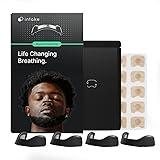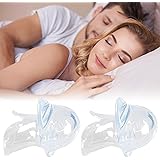Foam vs. Air Sleeping Pads: Choosing Your Backcountry Bed
Choosing the right sleeping pad for your backcountry adventures is a pivotal decision that directly impacts your comfort and overall experience. As the accompanying video expertly demonstrates, the long-standing debate between foam and inflatable sleeping pads continues to be a central topic for outdoor enthusiasts. Having explored the evolution of sleeping pads over decades, from rudimentary foam to today’s advanced designs, it’s clear that both options offer distinct advantages and drawbacks, making the “best” choice highly personal.
For those new to backpacking or looking to upgrade their gear, understanding these differences is key. This article delves deeper into the characteristics of foam and inflatable sleeping pads, expanding on the insights shared in the video to help you make an informed decision for your next journey into the wilderness, whether it’s a quick overnight or an extended thru-hike.
The Uncomplicated Comfort of Foam Sleeping Pads
When considering foam sleeping pads, exemplified by models like the Therm-a-Rest Z Lite, their greatest strength lies in their sheer simplicity and reliability. These pads are the workhorses of the backcountry, renowned for their “no-nonsense” approach to providing a barrier between you and the cold ground. Their construction means they are perpetually ready for use, requiring no inflation or deflation, which is a significant time-saver, especially for those frequently packing up camp.
One of the standout benefits of a foam sleeping pad is its unparalleled durability. Unlike their inflatable counterparts, foam pads are immune to punctures from sharp rocks, errant pine needles, or even embers from a campfire. This resilience means you never have to worry about waking up on cold, hard ground due to a leak. They act like a constant, steadfast mattress, providing predictable insulation without the risk of failure, which offers immense peace of mind in remote environments.
Advantages of Foam Pads
- Instant Setup: Simply unroll or unfold and you’re ready to rest. Ideal for fast-paced trips where every minute counts.
- Lightweight: Many foam pads are incredibly light. As highlighted in the video, some models can be half the weight of inflatable options, making them a favorite among gram-conscious hikers.
- Puncture-Proof: Their solid construction eliminates the risk of leaks, offering reliable insulation and comfort no matter the terrain.
- Affordable: Generally, foam pads are less expensive upfront, providing excellent value for a durable piece of gear.
- Doubles as a Seat: The robust nature of foam pads means they can easily serve as a comfortable cushion during trail breaks or around camp.
Considerations for Foam Pads
While their benefits are compelling, foam pads do come with certain trade-offs. The most noticeable is their packed size. Due to their inability to compress significantly, they often remain bulky, typically strapped to the outside of a backpack. This “big old cube,” as described, can be less ideal for tight spaces or situations where external carry is inconvenient, such as navigating dense brush or traveling on crowded public transport abroad.
Furthermore, foam pads tend to offer less cushioning and contouring compared to inflatable pads. While they provide adequate insulation and a basic layer of comfort, they won’t cradle your body in the same way. This can be a factor for side sleepers or those who prioritize a plush sleeping experience after a long day on the trail. Their R-value, which indicates thermal resistance, can also be lower than some specialized inflatable pads, potentially offering less warmth in colder conditions.
The Plush Comfort of Inflatable Sleeping Pads
Transitioning to inflatable sleeping pads, such as the Big Agnes Air Core Ultra, we step into a realm of enhanced comfort and packability. These modern marvels have revolutionized backcountry sleeping by offering a significantly more comfortable and supportive surface than traditional foam. The ability to inflate them to various pressures allows for a customized firmness, cradling the body and alleviating pressure points, which can feel like sleeping on a cloud after a rigorous day of hiking.
One of the most appealing aspects of inflatable sleeping pads is their incredible ability to pack down small. As demonstrated in the video, an inflatable pad can compress to a fraction of the size of a foam pad—sometimes a third or even a fifth of the volume. This compact nature makes them ideal for fitting inside a backpack, protecting them from external damage and freeing up space on the outside of your pack. For those traveling internationally or needing to maximize internal pack space, this feature is invaluable.
Advantages of Inflatable Pads
- Superior Comfort: Inflatable pads offer a cushioned, body-conforming surface, significantly improving sleep quality in the backcountry.
- Compact Packed Size: They compress into a small stuff sack, allowing for easy storage inside your backpack and protecting them from elements.
- High R-Value Options: Many inflatable pads incorporate advanced insulation, achieving high R-values suitable for cold weather and winter camping.
- Adjustable Firmness: You can fine-tune the air pressure to match your preferred sleeping firmness, providing a truly personalized experience.
Considerations for Inflatable Pads
Despite their luxurious comfort and minimal packed size, inflatable sleeping pads require more care and attention. The primary concern is their susceptibility to leaks. A tiny puncture from a sharp twig or a faulty valve can render the pad useless, leaving you with little to no insulation or comfort. Finding and patching a small hole often involves immersing the pad in still water, which is a luxury not available in the backcountry, making careful site selection and preventive measures crucial.
Inflating these pads also takes time and effort. While a pump sack or an integrated pump can help, mouth inflation can still be a “huffing” process, especially after a long day. Deflating and rolling them up precisely to achieve their compact size also demands a bit of technique and patience. For those on a daily thru-hike, this routine can become cumbersome, contrasting sharply with the instant deployment of a foam pad. Furthermore, inflatable pads are generally more expensive and require specific patch kits for repairs, adding to their overall cost and maintenance.
Understanding R-Value: Your Pad’s Thermal Shield
The R-value of a sleeping pad is a critical measurement that quantifies its resistance to heat flow, essentially telling you how well it will insulate you from the cold ground. A higher R-value indicates better insulation, meaning the pad will keep you warmer. As mentioned in the video, checking this value is essential when purchasing a pad, particularly if you anticipate cold weather camping.
For context, an R-value of 1-2 is typically suitable for warm summer nights, offering minimal insulation. A 3-season pad might have an R-value between 3 and 4, providing comfort in spring, summer, and fall temperatures. For winter camping or expeditions into truly frigid environments, an R-value of 5 or higher is often recommended. Inflatable pads often achieve higher R-values through internal baffles, synthetic insulation, or down fill, trapping air and preventing convective heat loss, which is harder to achieve with basic foam designs.
Making Your Choice: Foam and Air Sleeping Pads in Harmony
Ultimately, the choice between foam and inflatable sleeping pads hinges on your specific needs, priorities, and the nature of your adventures. If durability, reliability, and ease of use are paramount—perhaps for a beginner backpacker, a base camp scenario, or a thru-hiker who values quick setups—a foam pad like the Therm-a-Rest Z Lite is an excellent, fuss-free option. Its robust nature ensures consistent performance, and its lower cost makes it an accessible entry point into quality outdoor gear.
Conversely, if superior comfort, minimal packed size, and advanced insulation are your top priorities, then an inflatable sleeping pad like the Big Agnes Air Core Ultra will likely be your preferred companion. These pads transform your backcountry sleep experience, offering a restorative night’s rest that can be invaluable on longer or more challenging trips. However, be prepared to invest in a quality pad, carry a repair kit, and exercise care in setting up your camp to prevent punctures.
Many experienced backpackers even employ a hybrid approach, using a thin foam pad directly on the ground beneath their inflatable mattress. This combination offers several advantages: the foam pad provides an additional layer of warmth (boosting the overall R-value), protects the inflatable pad from punctures, and serves as a backup if the inflatable pad fails. Whichever path you choose, understanding the unique characteristics of foam and air sleeping pads will guide you to a more comfortable and enjoyable time in the great outdoors.








